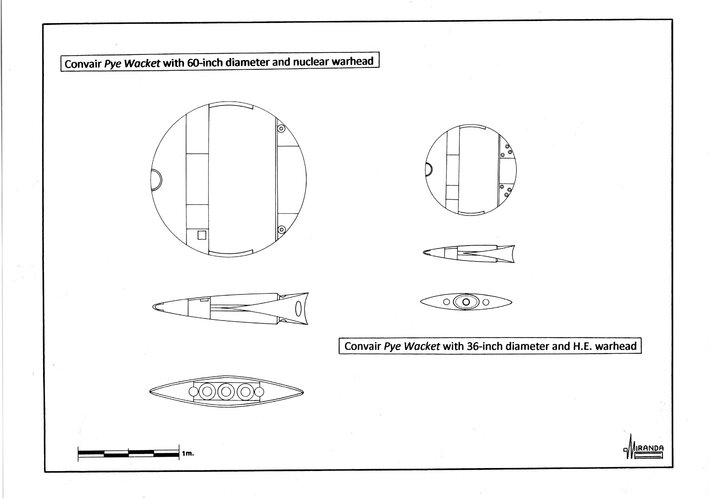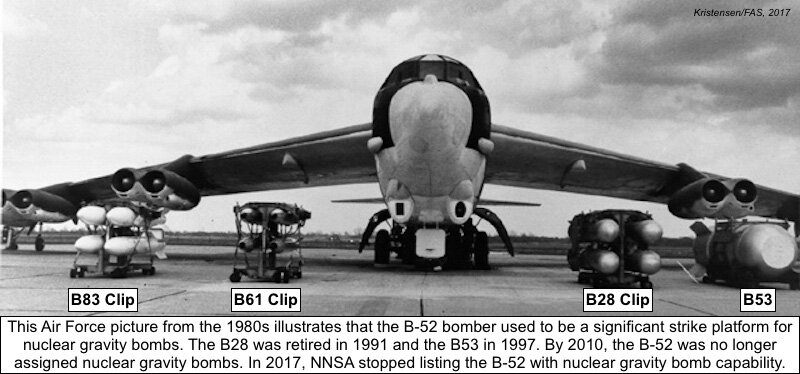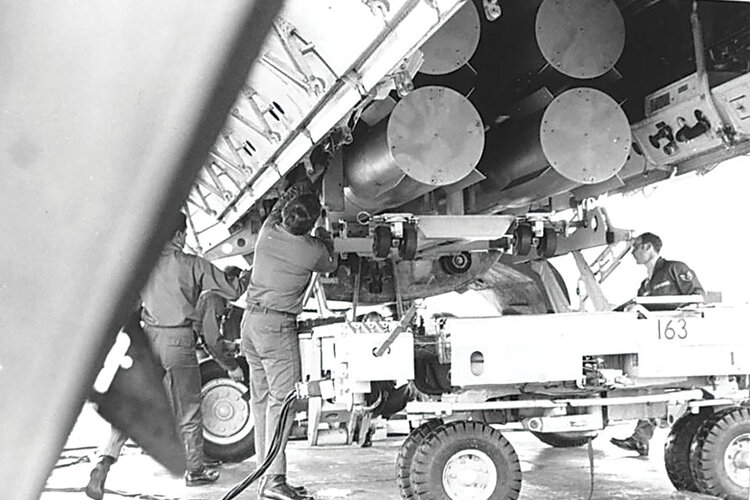Lenticular designs can take severe turns.
In August 1958, the North American project office submitted the proposal Defensive Antimissile System (DAMS) using air-to-air missiles launched by the
Valkyrie.
The
Defense Feasibility Study was completed in March 1959 and published by the Air Proving Ground Center-Eglin AFB the same month the U-2 incident occurred.
In 1948 the first experimental AAM-A-2 air-to-air missile was launched and entered in service with the USAF in 1955 as the Hughes AIM-4
Falcon.
The original purpose of the
Falcon was a Mach 3.8 self-defense weapon for the B-52 bomber and was shortly revived during the B-70 development. The rail-launched missile was not a particularly maneuverable and needed to be pointed in the right direction of the target.
Due to the B-70 speed the
Falcon could just be used against any threat coming from its forward hemisphere, but the
Valkyrie would have to defend itself against threats from all direction with spherical coverage.
The
Falcon was a cylindrical rocket with four delta wings. Would it have been thrown sideways from a B-70 flying to Mach 3 it would have been destroyed by the crosswind shock waves.
North American proposed the Weapons System WS-740A, a wingless lenticular-form rocket with omnidirectional launch capabilities, capable of engaging incoming missiles at relative speeds of Mach 10 and being able to survive and maneuver at 250g accelerations.
The project was awarded to the Convair Division of General Dynamics Corporation, under the codename
Pye Wacket in June 1959.
A general aerodynamic evaluation was conducted to determine the technical feasibility of lenticular cross section/circular planform configuration. Wind tunnel tests with several 1/3 scale models were conducted in the Arnold Engineering Development Centre.
The results indicated that the lenticular configuration with blunted trailing edge, sharp leading edge and modified tangent contours, have best aerodynamic characteristics than the symmetrical lenticular cross section, and the most desirable volume distribution for the propulsion system.
The lenticular configuration was efficient at hypersonic velocities with good maneuverability at altitude. Additional tests demonstrated that the aerodynamic controls are not suitable for use in the omnidirectional launch phase of flight, due to the necessity of alignment with the relative wind.
One reaction-jet control system was used, control in yaw, roll and pitch could be obtained by means of the thrust forces generated by four nitrogen-injected binary thrusters, with exhaust through the top and bottom surfaces of the disc.
Pye Wacket had an inertial midcourse guidance system with terminal infrared homing. The
Redeye IR seeker was mounted in the leading edge behind an IR window with a look angle of 40 degrees and cooling system.
The USAF determined that internal carriage of eight wingless missiles could be installed in the
Valkyrie with no range penalty.
The weapon was to be structurally rigid to withstand extremely high launch accelerations, rapid change of thrust direction for quick maneuver, maximum flight duration of 50 seconds, cruising at Mach 6.5+ and terminal velocities of Mach 10.
The expected aerodynamic heating of 3,300 ºF at 11 seconds of flight, requires the use of a leading edge made of
Pyrographite. The outer skin of the disc was made of polyester resin, with Titanium B-120 alloy honeycomb core, protected by a layer of Teflon ablating material to restrict skin temperatures to under800ºF. The internal structure was made of magnesium-alloy.
Three
Pye Wacket configurations were proposed in 1961:
60-inch diameter, 21 per cent thickness-to-chord ratio configuration
Power plant: three Thiokol M58A2 solid-fuel rocket motors with 10,200 lbf thrust each. Launch weight: 830 pounds. Warhead: one W54 nuclear device with 50 pounds weight. Range: 100,000 ft at 60,000 ft altitude.
60-inch diameter, 14 per cent thickness-to-chord ratio configuration
Power plant: one integral pancake-shaped solid-fuel rocket motor with 9,700 lbf thrust. Launch weight: 581 pounds. Warhead: 20 pounds of H.E. with impact fuse. Range: 120,000 ft at 60,000 ft altitude.
36-inch diameter, 21 per cent thickness-to-chord ratio configuration
Power plant: one integral pancake-shaped solid-fuel rocket motor with 5,000 lbf thrust. Launch weight: 200 pounds. Warhead: 20 pounds of H.E. with impact fuse. Range: 50,000 ft at 60,000 ft altitude.




